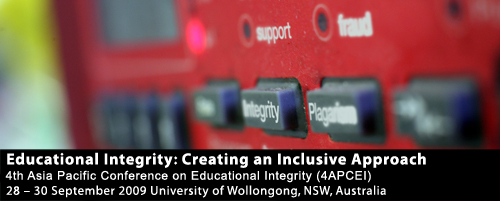Location
41.102
Start Date
29-9-2009 11:00 AM
End Date
29-9-2009 11:30 AM
Description
The increasingly popular trend of conceptualizing education in terms of “customer service” is, in some ways, attractive. It encourages educators to think in terms of meeting students’ needs and to develop innovative ways to deliver their “product.” In other ways, however, it fails to convey the essential collaborative, participatory, reciprocal relationship that is central to effective teaching and learning. With respect to academic integrity, the customer service model also obscures students’ roles and responsibilities. In this paper, we will identify some of the ways this model—in which the customer expresses a need and the vendor meets that need in exchange for payment—provides an inappropriate metaphor for understanding the project of teaching and learning (i.e., education). When embraced uncritically, the model has the potential both to undermine education and at the same time derail efforts to develop and sustain a culture of integrity. After identifying this model’s shortcomings, we will suggest ways to develop and promote a more robust model in which faculty and students work together toward a shared purpose while recognizing and embracing their interlocking responsibilities.
The customer isn’t always right: Limitations of “Customer Service” Approaches to Education Or Why Higher Ed is Not Burger King
41.102
The increasingly popular trend of conceptualizing education in terms of “customer service” is, in some ways, attractive. It encourages educators to think in terms of meeting students’ needs and to develop innovative ways to deliver their “product.” In other ways, however, it fails to convey the essential collaborative, participatory, reciprocal relationship that is central to effective teaching and learning. With respect to academic integrity, the customer service model also obscures students’ roles and responsibilities. In this paper, we will identify some of the ways this model—in which the customer expresses a need and the vendor meets that need in exchange for payment—provides an inappropriate metaphor for understanding the project of teaching and learning (i.e., education). When embraced uncritically, the model has the potential both to undermine education and at the same time derail efforts to develop and sustain a culture of integrity. After identifying this model’s shortcomings, we will suggest ways to develop and promote a more robust model in which faculty and students work together toward a shared purpose while recognizing and embracing their interlocking responsibilities.


